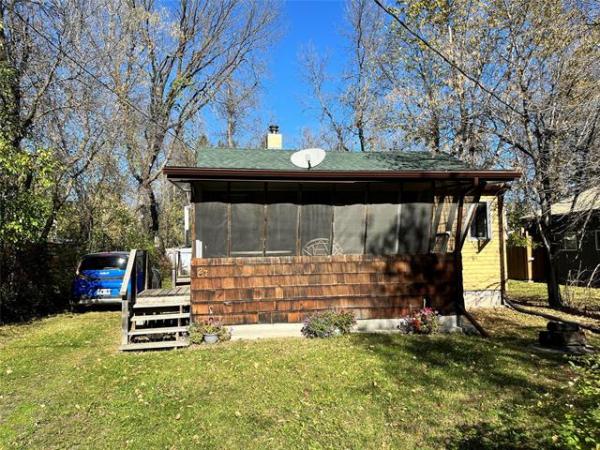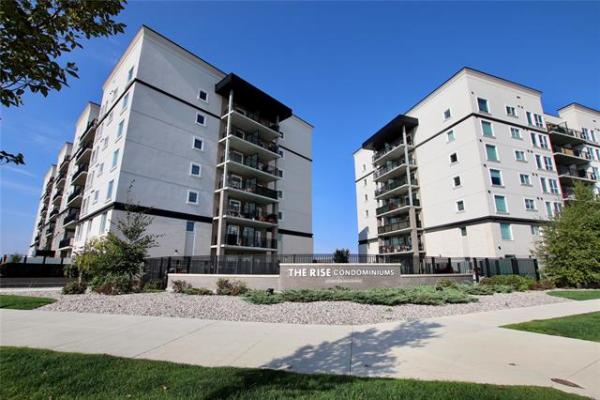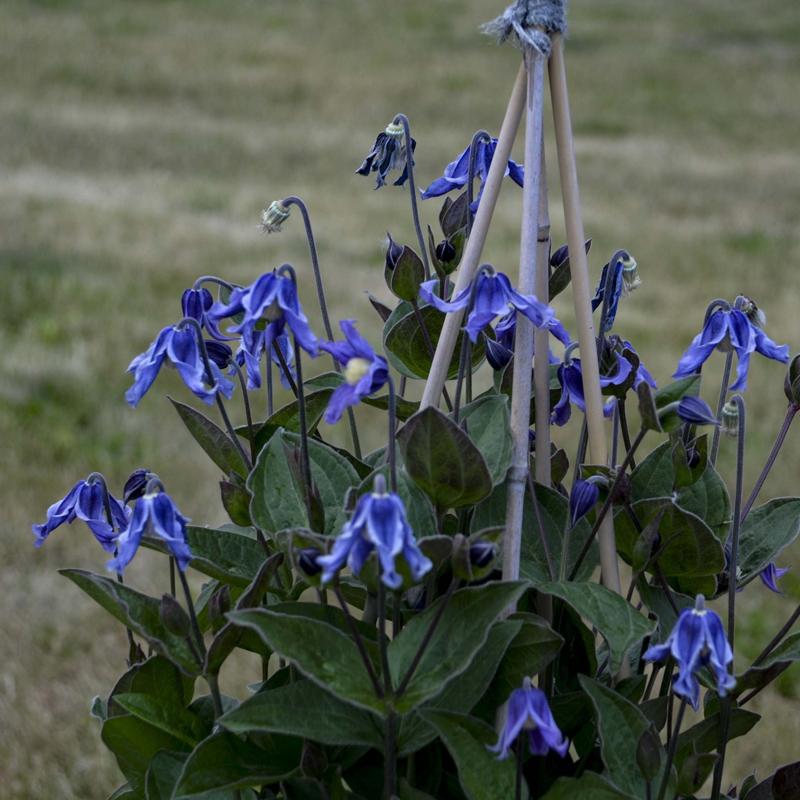
Walters Gardens Inc.
For something totally different, new Stand by Me clematis is a unique non-vining bush-type clematis. It has violet-blue bell-shaped flowers and large bronze-purple leaves.
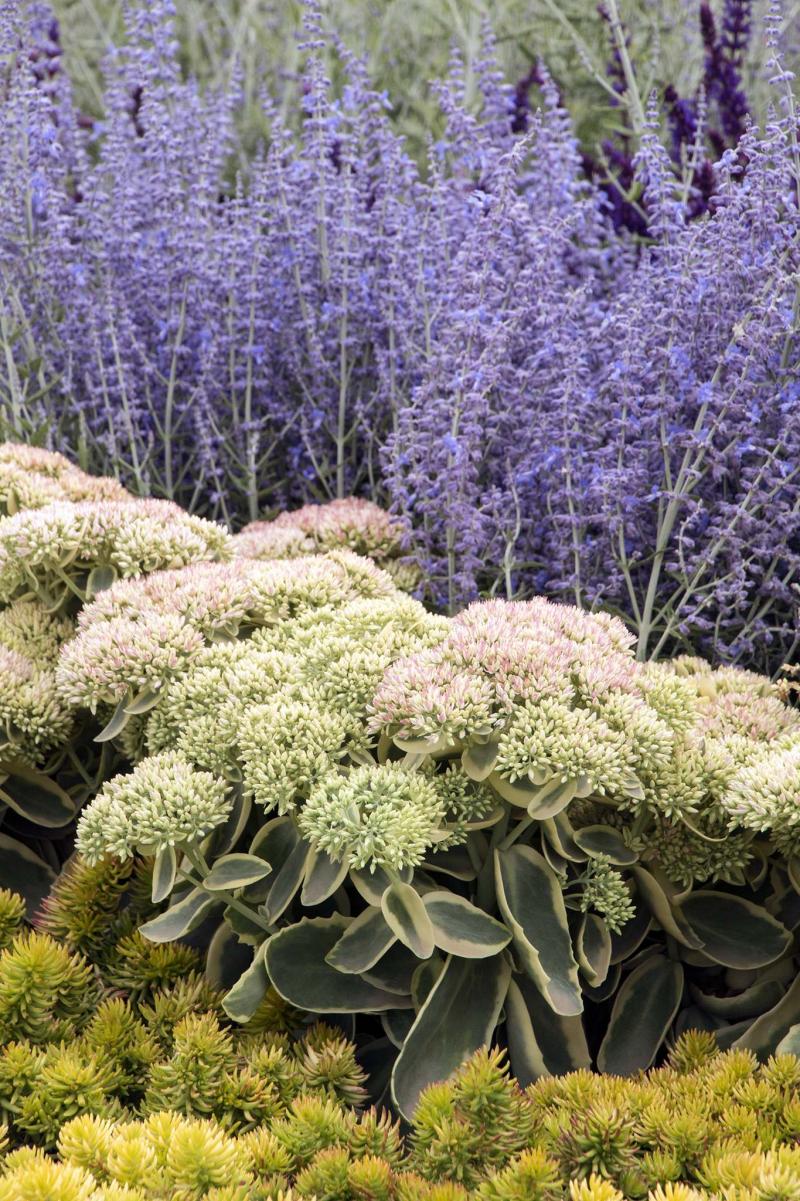
Monrovia
Lacey Blue is a compact Russian Sage that will fit anywhere. Masses of lavender-blue flowers on sturdier stems.
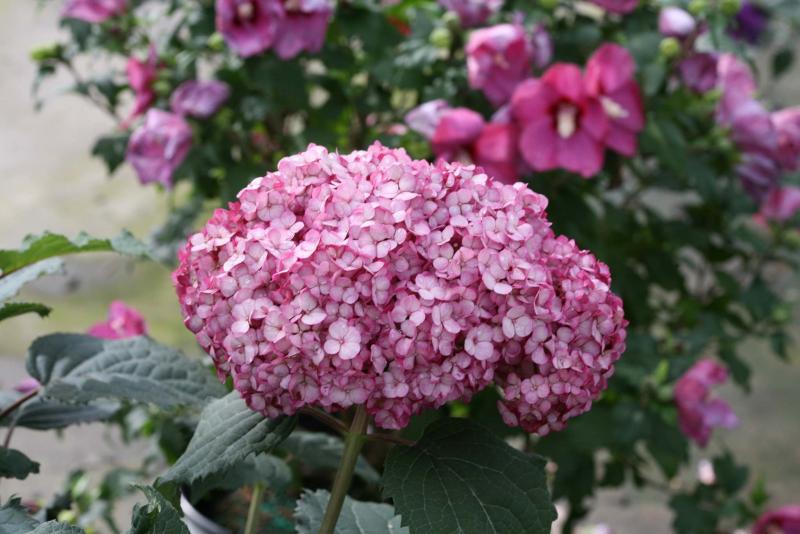
Proven Winners
Invincibelle Mini Mauvette hydrangea introduces deep mauve-violet colour to the species. Plant in full morning sun and bright, filtered afternoon sun for the best effect.
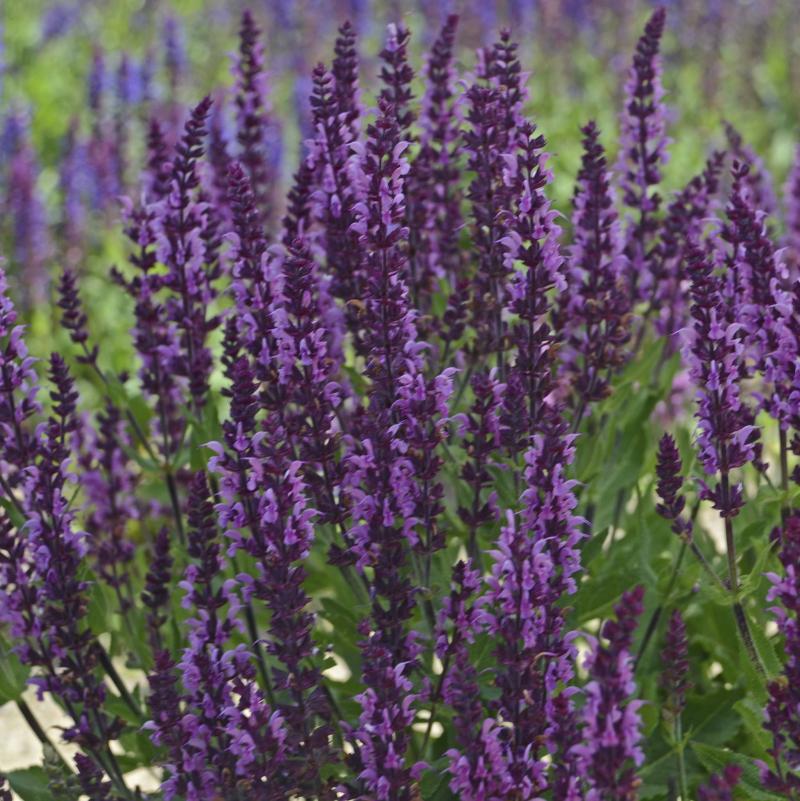
Walters Gardens Inc.
More compact than previous salvia varieties, bi-coloured Bumbleberry is part of the new Bumble series. Also look for Bumbleblue and Bumblesky to add more purple and blue to your perennial garden.
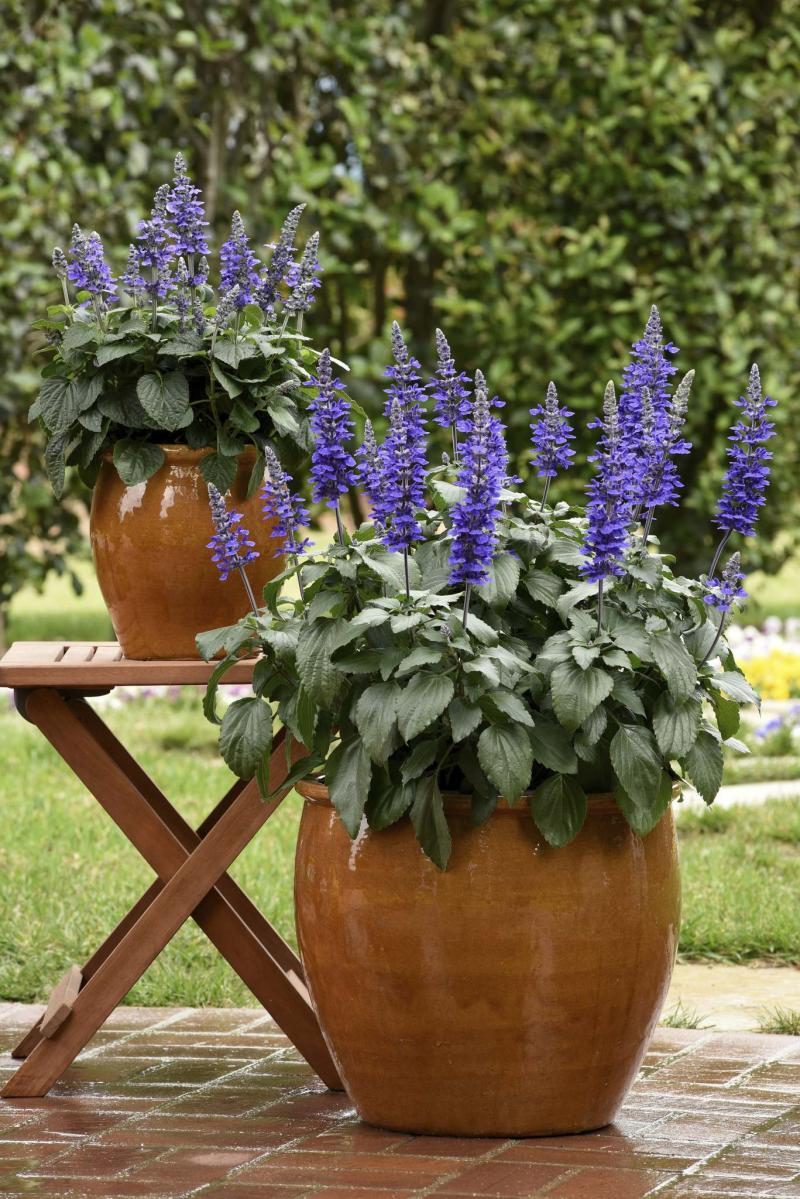
Ball Horticultural
Mystic Spires Improved salvia.
In the garden, hues of blue, violet and purple serve to draw the eye in and add vibrancy and energy to surrounding plants. For me, last summer, it was the royal purple foliage of Heuchera Forever Purple coral bells, the surreal metallic blue spiky bracts of Eryngium Donard Variety sea holly, and the mauve-coloured lollipop blooms of Verbena bonariensis Meteor Shower, that continually captured my attention.
Some of the best new plants for this spring offer scintillating blue, violet and purple tones. Use these new annual or perennial varieties to create brush strokes of colour or as fresh accents that will bring new life to your garden.
● Stand by Me clematis — before you skip to the next description, if you already grow a vining clematis in your garden or because you don’t have enough space to grow a spreading vine, Stand by Me is a new non-vining bush clematis. A hybrid that is a cross between non-climbing Clematis fremontii and Clematis integrifolia, Stand by Me has a shrub-like form with a mature height of only 86 to 96 centimetres.
Early blooming, downward-facing bell-shaped flowers appear in late May to June and are violet-purple with a pale yellow centre. The deep purple stems are nicely rounded and slightly pubescent. The large leaf size is another interesting feature of this attractive new introduction. Dark green, the leaves display shades of bronze-purple on their edges and undersides. Creamy, thread-like seed heads also provide added interest.
Stand by Me clematis takes the guesswork out of pruning: unlike early flowering clematis types that bear flowers on last year’s growth or late-flowering species that bloom only on the current season’s new growth, Stand by Me is a herbaceous clematis that dies to the ground for the winter the same as other herbaceous perennials, hence no pruning concerns whatsoever.
Do, however, deadhead spent flowers for some re-bloom later in the summer. Try growing Stand by Me between neighbouring plants for added support or make a teepee structure using three poles tied together at the top. Great excuse to buy a pretty iron obelisk for the dark stems to weave their way through or allow this low-growing clematis to spill onto the ground as a unique ground-cover.
Classified as hardy to zone 3, plant Stand by Me in a sunny to part-sun location that offers some protection from wind and mulch to keep the roots cool. Is this new clematis a novelty? Bushy, ground-hugging clematis is nothing new but Stand by Me is sure to spark conversation.
Salvia — One of those dependable, must-have plants that can be found in every garden in one form or another, whether as a perennial or annual variety, salvia is a genus that just keeps on reinventing itself — with the help of breeders, of course. Salvia nemorosa is a perennial salvia also known as sage. We know it as a plant that can withstand the brunt of summer’s baking heat and is distinguished by somewhat wrinkled leaves and upright lavender-like flower spikes that wave in the wind. It is an important plant in the garden for its ability to attract pollinators.
May Night is a gorgeous, indigo-flowered variety that was named 1997 perennial plant of the year. Now come several new Salvia nemorosa introductions — Bumble, Salute, Caramia, and Spring King. What does each have in common? In addition to zone 3 hardiness, better branching, and a more compact habit, gardeners can expect excellent flowering in the first year. Remember that saying, "The first year perennials sleep, the second year they creep and the third year they leap?" Gardeners don’t want to wait for bloom performance and breeders are listening.
The Bumble series consists of Bumbleberry, Bumbleblue, and Bumblesky. Bumbleberry offers delicious bi-coloured flower spikes with dark fuchsia pink blooms held in dark wine purple calyxes on compact 25 to 30 cm stems. It will be perfectly suited to the front of a border or in a container. Bumblesky is slightly taller (35 to 40 cm) with light, sky blue flowers. Bumbleblue has violet-blue flowers. Planted together, these three would make a nice combination.
The Salute series come in deep blue, ice blue and pink. Both Spring King and Caramia are purple, so you will have plenty of blue and purple shades to choose from. Keep in mind that all of these bloom late spring to July, so be sure to deadhead and cut back to their base for the second flush of flowers later in summer.
The flower spikes of annual salvia are useful for adding both a vertical dimension and rich, dark shades of continuous colour to your container designs. Mystic Spires Improved is meant to be exactly that — an improved annual salvia with longer flower hold and a truer blue colour with better branching for a larger number of flower spikes. Its height is significant at 46 to 61 cm and the dark green leaves are large and slightly downward facing. This is a bushy annual that could be planted solo in a container.
New Mysty salvia brings the same free-flowering characteristic and blue colour as Mystic Spires, but in a neater package at only 30 to 46 cm tall. Going forward, expect to see more new salvia introductions with emphasis on bi-colour blooms, ever darker-coloured stems and deep, rich indigo hues.
Russian Sage — Another sun-loving, drought-tolerant perennial, Perovskia atriplicifolia Russian Sage is enjoying a resurgence of interest in recent years by gardeners, landscape designers, and plant breeders. We love Russian Sage for its late-season show of masses of tiny, lavender-blue flowers with a touch of indigo growing against silver-white stems and lightly fragrant grey-green leaves.
Named plant of the year for 1995, the traditional Russian Sage variety is now too tall (90-100 cm) for our smaller spaces. Enter Lacey Blue, a new Russian Sage variety for 2018, at a mere 30 cm tall and only 25 cm wide. This little blue miniature is shorter than last year’s dwarf Crazy Blue and only half the width.
In addition, the semi-woody stems of Lacey Blue have been bred to have built-in sturdiness. Floppy stems spoil the picture so this is a great improvement. More than that, Lacey Blue’s miniature size makes it a unique addition near the front of the border.
Invincibelle Mini Mauvette Hydrangea — save the best for last. Get in line (but behind me) for this new hydrangea, which introduces a whole new colour to the species. An arborescens hydrangea, the large mophead flowers are said to be deep mauve-violet. Supported by very strong stems, a profusion of blooms begins appearing in early summer right until the first frost.
The compact size, too, is a bonus. With a height and width of only 76 to 91 cm, consider growing this little gem in patio pots as well as flower beds. Hardy to our growing zone, simply lift from its pot in fall and plant in the ground for winter.
Generally, hydrangea’s best colour is achieved in ideal conditions, that is, a location which receives full morning sun and bright, filtered afternoon sun.
colleenizacharias@gmail.com
Correction: The green wall at 220 Portage Ave. is a Green over Grey wall, not a Dirtt modular wall system as described in the Jan. 20 article.

